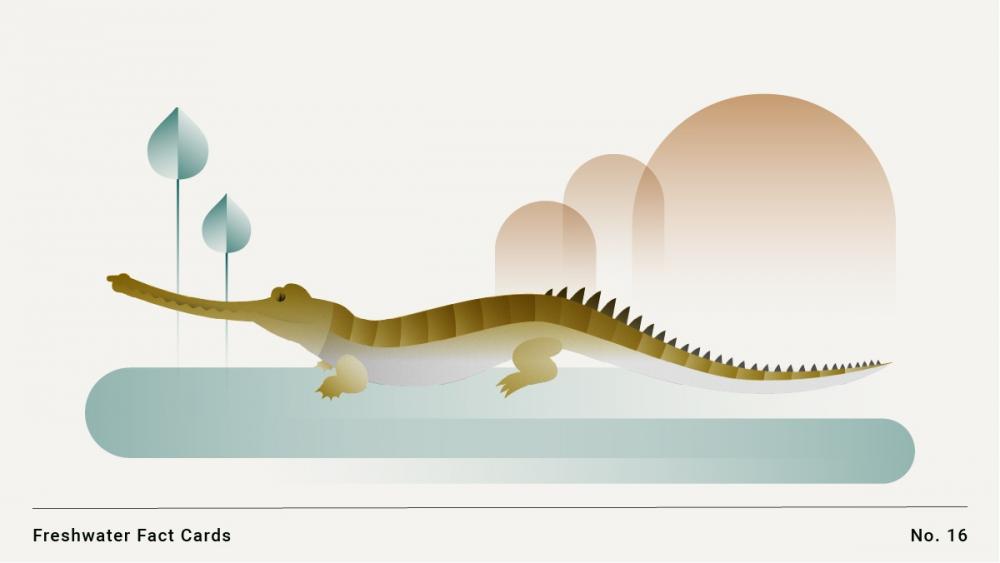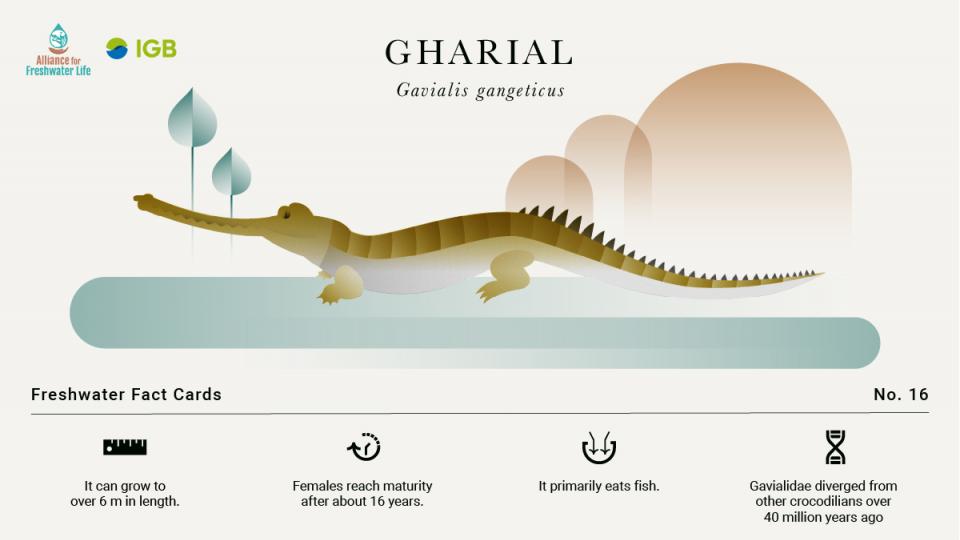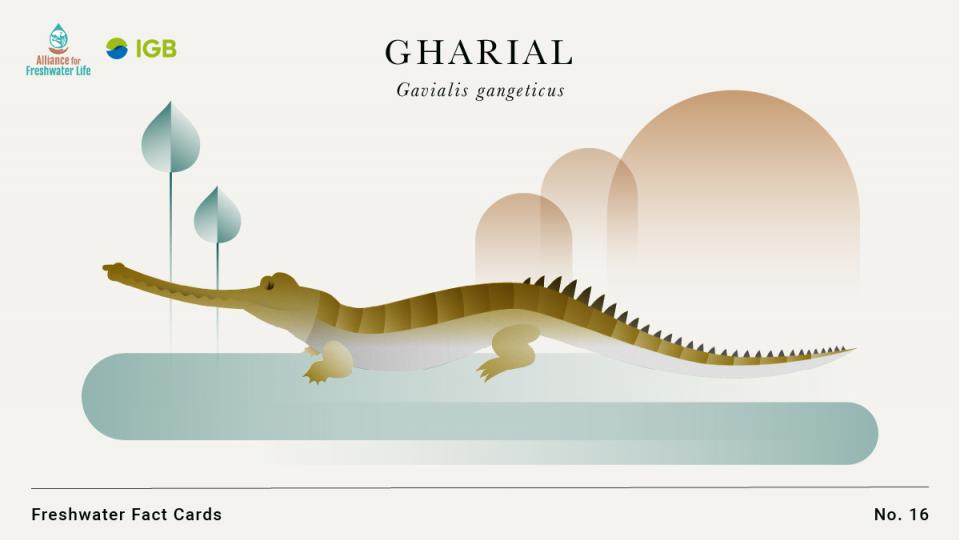
- Males have a large, bulbous growth at the end of the snout, which resembles a pot locally known as “ghara”.
- The function of the ghara is uncertain. It is suggested that males use it to make a loud hissing sound or as a visual display signal to females.
- The gharial is one of the two extant species in the family Gavialidae.
- It is a river dwelling crocodilian.
- It can live for up to 60 years.
- Males reach sexual maturity after around 13 years.
- Gharials dig nests in sand banks. Females lay about 40 eggs on average.
- Their eggs (on average weighing about 160 g) are amongst the largest extant crocodilian eggs.
- The estimated size of the global adult population is approximately 300-900 individuals.
- The current distribution range is less than 10 % of its historical distribution range.
- It is assessed as Critically Endangered on the IUCN Red List.

It can grow to over 6 m in length. Females reach maturity after about 16 years. It primarily eats fish. Gavialidae diverged from other crocodilians over 40 million years ago.

Males have a large, bulbous growth at the end of the snout, which resembles a pot locally known as “ghara”. The current distribution range is less than 10 % of its historical distribution range. The estimated size of the global adult population is approximately 300-900 individuals.







